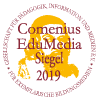7. Electronics – 7.3 Transistors (teacher instructions)
Text
Experimentation instructions:
Background information on the content and practical information on conducting the “Transistor" experiment.
Available in:
English
Type of media:
Text
Last update:
2022-10-24
License:

This medium is made available under a CC BY-SA 4.0 international license.
What does this mean?
How to reference this medium

This medium is made available under a CC BY-SA 4.0 international license.
What does this mean?
How to reference this medium
Media package:
Description:
The experiment provides students with the opportunity to learn about transistors which are used in almost every technological device. Transistors are the fundamental components of modern electronics ranging from cooking stoves, car ignitions and household air-conditioners to control systems and airplanes, to name just a few of millions of examples. Transistors have also been central to the development of logical operations and computers. In short: Transistors are key to understanding and working with electronics.
One item deals with „Technical application and vocational orientation“.
Information and ideas:
• Particularly in this experiment, we recommend your students to do the additional experiment described in “Doing further research”.
• See also the additional Information about LEDs.
• There are two basic types of transistors, NPN and PNP. The experiment uses an NPN transistor (negative-positive-negative). NPN- and PNP-transistors have to be inserted differently to function correctly, i.e. to turn the transistors on. NPN- and PNP-transistors look the same. The part number printed on them distinguishes them from regular transistors. For example, a common NPN-transistor has the part number BC 547 or BC 548 printed on the component; a PNP-transistor may have the part number BC 548. If you use regular transistors, you can look up their datasheets online.
In contrast to the wiring of a buzzer as in the first experiment, which is an electrical circuit, the transistor circuit is an electronic circuit.
The transistor is key to understanding electronics. It is recommend to do the further research with all students, as this will provide additional learning and will reinforce the understanding of a transistor. When conducting both experiments and discussing them, be sure to schedule enough time for your lessons, as 45 minutes will not suffice.
One item deals with „Technical application and vocational orientation“.
Information and ideas:
• Particularly in this experiment, we recommend your students to do the additional experiment described in “Doing further research”.
• See also the additional Information about LEDs.
• There are two basic types of transistors, NPN and PNP. The experiment uses an NPN transistor (negative-positive-negative). NPN- and PNP-transistors have to be inserted differently to function correctly, i.e. to turn the transistors on. NPN- and PNP-transistors look the same. The part number printed on them distinguishes them from regular transistors. For example, a common NPN-transistor has the part number BC 547 or BC 548 printed on the component; a PNP-transistor may have the part number BC 548. If you use regular transistors, you can look up their datasheets online.
In contrast to the wiring of a buzzer as in the first experiment, which is an electrical circuit, the transistor circuit is an electronic circuit.
The transistor is key to understanding electronics. It is recommend to do the further research with all students, as this will provide additional learning and will reinforce the understanding of a transistor. When conducting both experiments and discussing them, be sure to schedule enough time for your lessons, as 45 minutes will not suffice.
Learning resource type:
Experiment
Subjects:
Physics; Technology
Grade levels:
Grade 7 to 9; Grade 10 to 13
School types:
Middle/high school; Vocational training
Keywords:
Electrical circuit; Electricity; Electronics; Energy; Transistor
Bibliography:
Siemens Stiftung Media Portal
Author:
Dr. Ramon Leyendecker
Rights holder:
© Siemens Stiftung 2022



